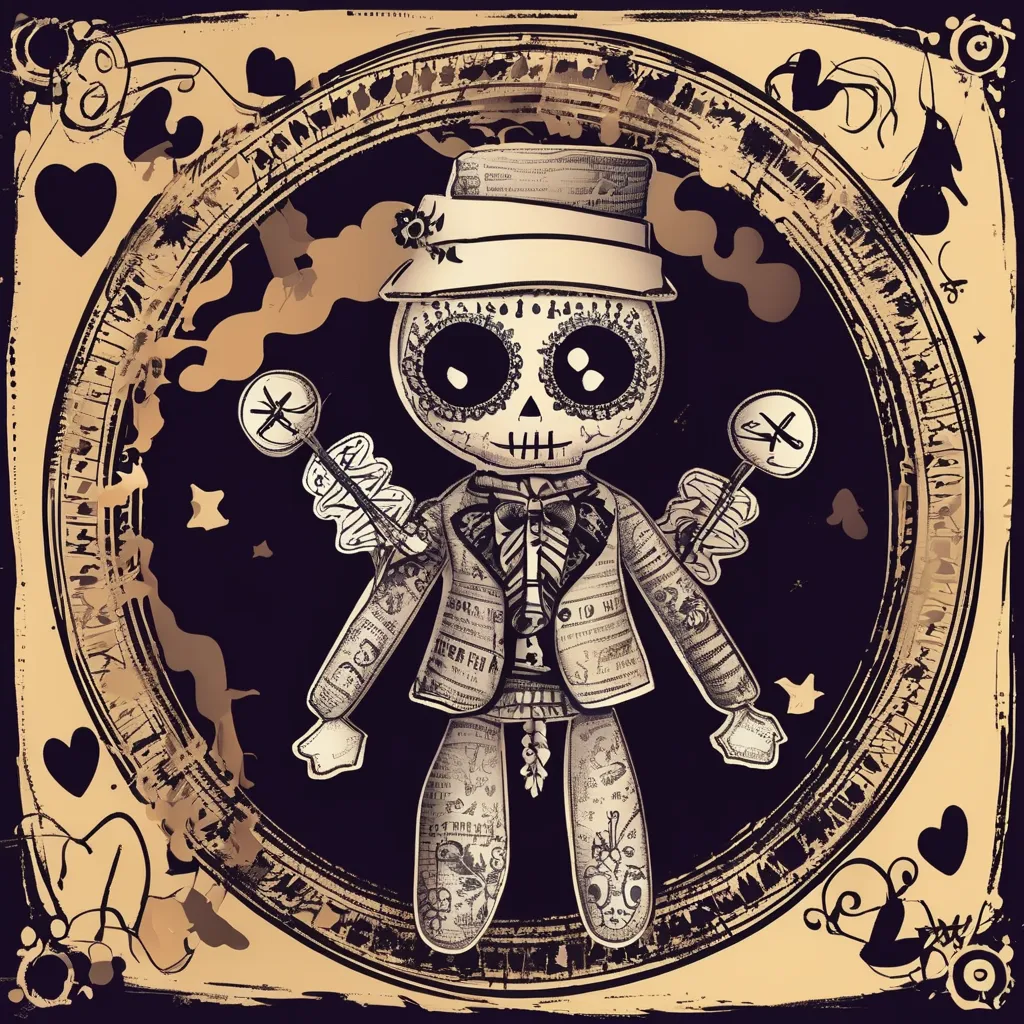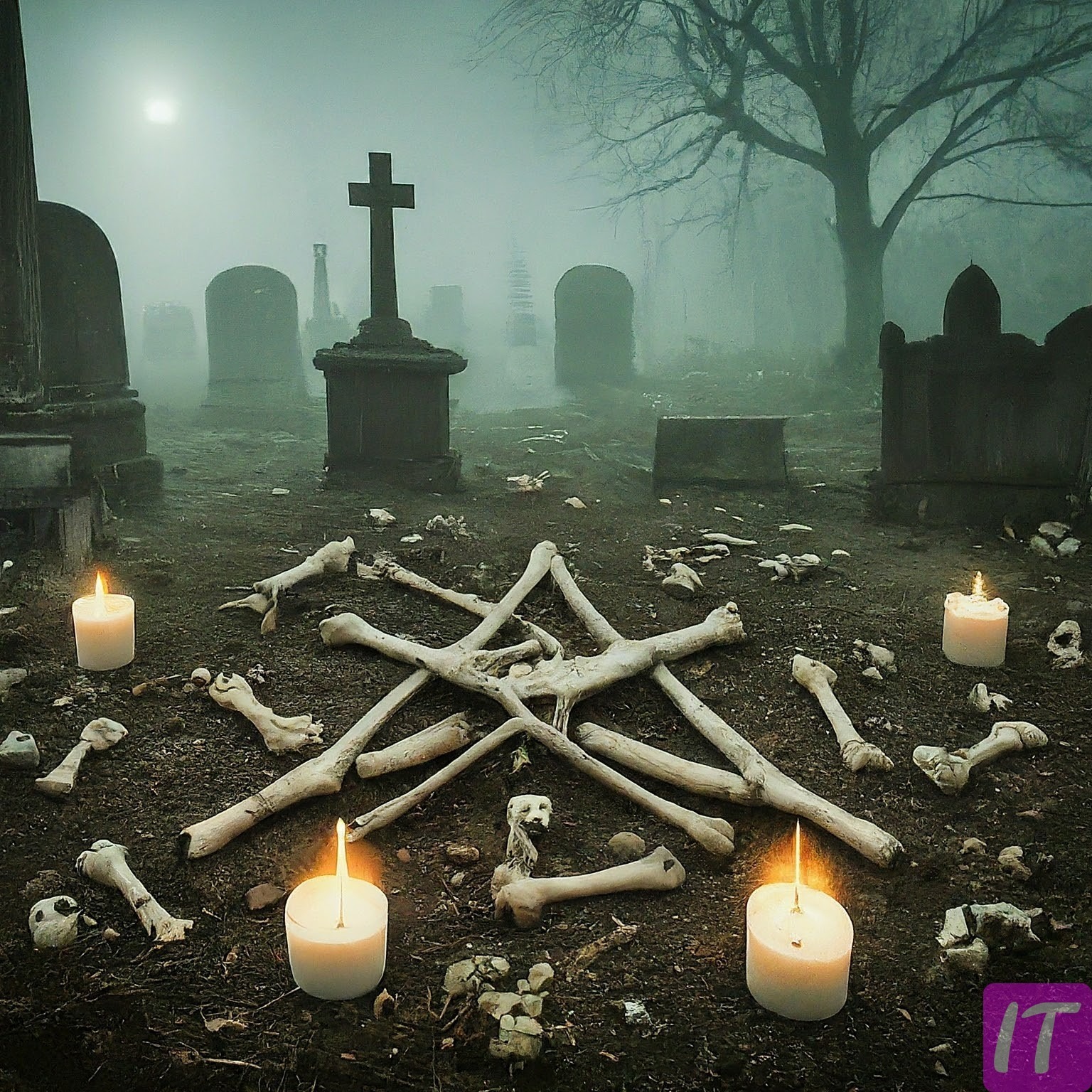What is Voodoo? What Is Voodoo Doll? Is It Real?
Welcome to ITEACH.TOP, where you can learn everything! Today, we unravel the mysteries of Voodoo and Voodoo dolls. This article will delve deep into their origins, significance, cultural impact, and much more. By the end, you’ll have a comprehensive understanding of these enigmatic topics. So, let’s get started on this fascinating journey.
Understanding the Origins of Voodoo
Voodoo, often shrouded in mystery and misconception, has its roots in the spiritual practices of West Africa. It was brought to the Americas during the transatlantic slave trade, intermingling with indigenous traditions and Catholicism to form the rich, complex religion known today.
Emerging in the 16th century, Voodoo’s core beliefs revolve around the worship of spirits and ancestors. These spirits are intermediaries between the human world and the divine. Unlike monotheistic religions, Voodoo acknowledges a pantheon of deities, each with specific roles and responsibilities.
The slave trade played a pivotal role in Voodoo’s dissemination. Slaves from various African regions, carrying their unique spiritual traditions, found common ground in their shared oppressions. This amalgamation fostered the birth of Voodoo in regions like Haiti, Louisiana, and Cuba.
Historically, Voodoo was a means of resistance against oppression. In Haiti, it significantly influenced the Haitian Revolution, where enslaved people utilized rituals to galvanize their fight for freedom. This history underscores Voodoo’s enduring legacy of empowerment and resilience.
In essence, understanding Voodoo’s origins isn’t merely about tracing its historical roots but also appreciating the cultural exchange and syncretism that shaped its evolution. As a belief system, Voodoo continues to adapt and thrive, maintaining a vibrant presence in the spiritual landscape.
The Spiritual Essence of Voodoo
At its core, Voodoo is a deeply spiritual religion centered on the veneration of spirits and ancestors. These spirits, known as “loa” or “lwa,” are paramount in Voodoo practice, serving as mediators between humans and the divine.
The loa can be categorized into different families, each serving unique purposes. For instance, the Rada loa are generally benevolent, focusing on family and health, while the Petro loa are more aggressive, often invoked for protection or justice. This duality reflects the balance of life itself, encompassing both positive and negative forces.
Voodoo practitioners believe that the spirits communicate through direct possession, dreams, and rituals. This spiritual communication is not merely symbolic but is considered a vital aspect of daily life, influencing decisions, behaviors, and community relations.
The role of the “houngan” (priest) and “mambo” (priestess) is crucial in Voodoo. These spiritual leaders guide the community through rituals, serve as healers, and maintain the spiritual equilibrium by mediating with the loa. Their extensive knowledge of herbal medicine, divination, and sacred chants is instrumental in Voodoo practice.
Thus, the spiritual essence of Voodoo lies in its intricate relationship with the unseen world. It’s a religion that profoundly values the interconnectedness of life, death, and the spiritual realm. Through rituals, offerings, and respect for the loa, Voodoo practitioners seek to maintain harmony and balance in their lives.
What Does a Voodoo Doll Represent?
Contrary to popular belief, the Voodoo doll is a multifaceted symbol, rich in spiritual and cultural significance. It serves as a conduit for communication with spirits, often crafted to address specific issues or requests.
Typically, a Voodoo doll is created using natural materials like cloth, twine, and herbs. It’s imbued with personal items or symbolic tokens to enhance its spiritual efficacy. These elements collectively make the doll a powerful tool for focusing intent and energy.
Different types of Voodoo dolls exist, each serving a unique purpose. For instance, some dolls are designed for healing, love, or protection, while others might be used for justice or revenge. The intent behind the creation and use of each doll is what ultimately defines its purpose.
In many cases, these dolls are not instruments of harm but rather tools for positive change. A healing doll, for example, might be used in a ritual to alleviate illness, while a love doll could help to strengthen romantic relationships. The act of pinning or binding the doll is a symbolic gesture, channeling the practitioner’s intentions into the physical realm.
Furthermore, Voodoo dolls can act as a focal point in rituals, concentrating the practitioner’s energy and intention. This practice is deeply rooted in the belief that thoughts and actions have a profound impact on reality, aligning with the broader principles of sympathetic magic.
Ultimately, Voodoo dolls represent a bridge between the material and spiritual worlds. They are powerful symbols of intent, embodying the belief that through focused energy and ritual practice, one can influence the forces that shape their life.
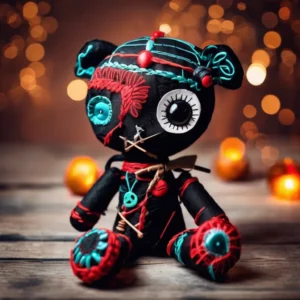
The Cultural Significance of Voodoo
Voodoo’s cultural significance extends far beyond its ritualistic practices, embedding itself deeply into the social and cultural fabric of communities where it thrives. It’s not just a religion but a way of life, influencing art, music, dance, and community dynamics.
In places like Haiti and Louisiana, Voodoo has profoundly impacted cultural identity. It encapsulates a sense of resilience, echoing the historical struggles and triumphs of the people. Festivals like Mardi Gras in New Orleans and the Rara in Haiti blend Voodoo traditions with vibrant cultural expressions, showcasing the religion’s enduring influence.
Artistic expressions in Voodoo are rich and varied, ranging from intricate veves (sacred symbols) drawn during rituals to elaborate costumes worn during ceremonies. These visual representations are not merely decorative; they are imbued with spiritual meaning, connecting the physical world with the divine.
Music and dance are central to Voodoo ceremonies, serving as mediums for spiritual connection and communal bonding. Drumming, in particular, is believed to summon the spirits, with different rhythms corresponding to different loa. The communal participation in these rituals fosters a sense of unity and shared purpose.
Furthermore, Voodoo’s emphasis on community and mutual support has led to the development of social structures that prioritize collective well-being. Community members often come together to celebrate rituals, support one another, and seek guidance from spiritual leaders, reinforcing social cohesion.
In summary, the cultural significance of Voodoo is vast and multifaceted. It permeates every aspect of life, from art and music to social structures and community relations. As a living, breathing tradition, Voodoo continues to shape and be shaped by the cultures it inhabits.
Historical Background of Voodoo Practices
The historical background of Voodoo is a tapestry woven with threads of resilience, adaptation, and cultural synthesis. Emerging from the spiritual traditions of West Africa, Voodoo found new expressions in the Americas, evolving through the pressures of colonization and slavery.
Voodoo’s journey began with the arrival of enslaved Africans in Haiti and Louisiana in the 16th and 17th centuries. These individuals brought with them diverse spiritual practices, which fused with indigenous beliefs and Catholicism to form the syncretic religion known today. This process of cultural amalgamation was not only a means of spiritual survival but also a form of resistance against oppressive regimes.
The Haitian Revolution (1791-1804) is a landmark event in the history of Voodoo. It was during this period that enslaved Africans, united by their shared Voodoo practices, orchestrated a successful rebellion against French colonial rule. The revolutionaries believed that their spiritual rituals endowed them with the strength and courage to fight for their freedom. This historical moment underscores Voodoo’s role as both a spiritual and socio-political force.
In Louisiana, Voodoo evolved uniquely, influenced by a melting pot of cultures including French, Spanish, Native American, and African traditions. Figures like Marie Laveau, the famed “Voodoo Queen of New Orleans,” played a crucial role in popularizing and legitimizing Voodoo practices during the 19th century. Her legacy endures, symbolizing the blending of cultures and the spiritual power of Voodoo.
Over the centuries, Voodoo has faced scrutiny and persecution. Misunderstood and often demonized by colonial authorities and Christian missionaries, it was forced to adapt and go underground in some regions. Despite these challenges, Voodoo persisted and remained a resilient and adaptive tradition.
Thus, the historical background of Voodoo is a testament to the enduring spirit of its practitioners. It highlights Voodoo’s ability to adapt, survive, and thrive despite centuries of oppression and misunderstanding. This rich history continues to shape the practice and perception of Voodoo in contemporary society.
Real-Life Stories of Voodoo Experiences
Real-life stories of Voodoo experiences offer a glimpse into the profound impact this religion has on its practitioners. These narratives range from extraordinary tales of healing and protection to everyday acts of spiritual connection and communal support.
One such story is that of Nicole, a resident of New Orleans, who turned to Voodoo after experiencing chronic health issues. Traditional medicine had failed to provide relief, leading her to seek the guidance of a houngan. Through a series of rituals and herbal treatments, Nicole experienced significant improvement in her health. She attributes her recovery to the spiritual power of Voodoo and the dedicated support of her spiritual community.
In Haiti, the story of Jean-Paul, a local farmer, underscores Voodoo’s role in fostering communal resilience. During a particularly harsh drought, Jean-Paul organized a Voodoo ceremony to invoke the loa of rain. The community came together, participating in the ritual with hope and solidarity. Remarkably, the drought broke soon after, with locals believing that their collective faith and the power of Voodoo had brought about the much-needed rain.
Another compelling narrative is that of Marie Laveau, whose life and legacy continue to resonate in New Orleans. Known as the “Voodoo Queen,” Marie Laveau’s influence extended beyond her spiritual prowess. She was also renowned for her charitable work and legal advocacy for marginalized communities. Her ability to blend Voodoo practices with social activism exemplifies the religion’s broader impact on societal well-being.
These stories illustrate that Voodoo is more than just rituals and ceremonies; it’s a living tradition that profoundly shapes the lives of its practitioners. Whether through healing, communal support, or social activism, Voodoo’s impact is tangible and deeply felt.
In essence, real-life stories of Voodoo experiences highlight the religion’s capacity to provide hope, healing, and a sense of belonging. They reflect the enduring power of Voodoo to influence lives and communities in meaningful ways.
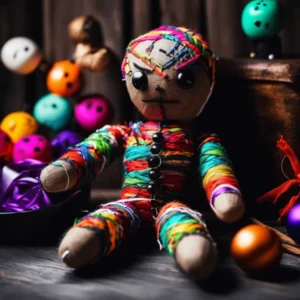
The Connection Between Voodoo and Ancestors
In Voodoo, ancestors hold a place of immense significance, serving as both spiritual guides and protectors. The connection between Voodoo and ancestors is deeply embedded in the belief that the spirits of the departed continue to influence and guide the living.
Ancestral veneration is a cornerstone of Voodoo practice. It involves rituals, offerings, and prayers directed towards ancestors, acknowledging their enduring presence and seeking their guidance. These practices are rooted in the belief that ancestors possess wisdom and power, acting as intermediaries between the human and spiritual realms.
Practitioners often set up altars dedicated to their ancestors, adorned with photographs, heirlooms, and personal belongings. These altars serve as focal points for rituals and are regularly tended to, reflecting the ongoing relationship between the living and the dead. Offerings of food, drink, and other symbolic items are common, signifying respect and gratitude for the ancestors’ continued support.
In Voodoo ceremonies, ancestors are frequently invoked to bless and protect the participants. Their presence is considered essential for the efficacy of the rituals, providing spiritual strength and guidance. This practice underscores the belief that maintaining a strong connection with one’s ancestors is vital for personal and communal well-being.
The reverence for ancestors in Voodoo also extends to ethical and moral conduct. Practitioners believe that living a righteous life honors their ancestors, who, in turn, provide protection and blessings. This reciprocal relationship fosters a sense of accountability and moral integrity within the community.
In summary, the connection between Voodoo and ancestors is profound and multi-dimensional. It reflects a deep-seated belief in the continuity of life and the enduring influence of the departed. Through rituals, altars, and ethical conduct, Voodoo practitioners maintain a robust and meaningful relationship with their ancestors, enriching their spiritual lives.
Debunking Myths Around Voodoo Dolls
Voodoo dolls are perhaps the most misunderstood and sensationalized aspects of Voodoo. Popular media has perpetuated numerous myths, often portraying these dolls as sinister tools of black magic. However, a closer examination reveals a more nuanced and accurate understanding.
One of the most pervasive myths is that Voodoo dolls are used primarily for malevolent purposes, such as cursing or harming others. In reality, Voodoo dolls serve a variety of functions, many of which are benign or even benevolent. They can be used for healing, protection, love, and other positive intentions.
Another common misconception is that Voodoo dolls are sticking pins into a doll to cause physical harm to a person. While pins and needles may be used, they are symbolic tools meant to focus intent and energy. The act of pinning is often used to address specific issues, such as alleviating pain or removing obstacles, rather than causing harm.
The notion that Voodoo is inherently evil or diabolical is another myth that needs debunking. Voodoo, like any other religion, encompasses a wide range of practices and beliefs. Its primary focus is on community, spiritual harmony, and the veneration of spirits and ancestors. The portrayal of Voodoo as dark or malevolent is a gross oversimplification and often rooted in cultural misunderstandings and prejudice.
Moreover, the belief that Voodoo dolls are uniquely linked to Voodoo is inaccurate. Similar dolls and effigies are used in various cultures and spiritual practices worldwide. These objects serve similar purposes, acting as focal points for energy and intention. The exclusivity attributed to Voodoo dolls is more a product of sensational storytelling than factual representation.
In essence, debunking myths around Voodoo dolls involves separating fact from fiction. It requires acknowledging the multiplicity of ways these dolls are used and understanding the broader context of Voodoo practices. By dispelling these misconceptions, we can appreciate the true significance and richness of Voodoo traditions.
The Role of Spirits in Voodoo Religion
The role of spirits in Voodoo religion is central and multifaceted, encompassing a broad spectrum of functions and influences. Known as “loa” or “lwa,” these spirits are revered as powerful intermediaries between the human and divine realms.
Voodoo spirits are divided into various families, each with its own attributes and areas of influence. The Rada spirits, for instance, are generally associated with benevolent and nurturing qualities, focusing on aspects like family, health, and community harmony. The Petro spirits, on the other hand, are more fiery and aggressive, often invoked for protection, justice, or to address specific challenges.
Communication with the spirits is a fundamental aspect of Voodoo practice. This is typically achieved through rituals, offerings, and possession. During possession, a spirit temporarily inhabits the body of a practitioner, using them as a vessel to convey messages, blessings, or guidance. This phenomenon is considered a profound privilege and responsibility, indicating a deep connection with the spiritual realm.
Offerings to the spirits can include food, drink, candles, and other symbolic items. These offerings are made to honor the spirits and seek their favor. The type of offerings and the manner in which they are presented can vary depending on the specific loa being addressed and the purpose of the ritual.
The spirits also play a crucial role in guiding ethical and moral conduct. Voodoo practitioners often seek the counsel of the loa for important decisions, trusting in their wisdom and guidance. The belief is that maintaining a harmonious relationship with the spirits leads to a balanced and fulfilling life.
In summary, the role of spirits in Voodoo religion is both profound and pervasive. They are integral to the religion’s practices, rituals, and ethical framework. Through their interactions with the loa, Voodoo practitioners seek to navigate the complexities of life, drawing strength and guidance from the spiritual realm.
Analyzing the Symbolism Behind Voodoo Dolls
The symbolism behind Voodoo dolls is rich and multi-layered, reflecting the intricate beliefs and practices of Voodoo. These dolls serve as tangible representations of intent, embodying the principles of sympathetic magic and spiritual connection.
At its core, a Voodoo doll symbolizes the concept of “contagion” in sympathetic magic. The idea is that objects that have come into contact with a person can influence that person through the doll. Personal items such as hair, clothing, or photographs are often incorporated into the doll, enhancing its connection to the individual it represents.
Different colors and materials used in the creation of Voodoo dolls also carry specific symbolic meanings. For instance, a red doll might be used for love and passion, while a black doll could represent protection or justice. The choice of materials can convey various spiritual significances, enriching the doll’s symbolic value.
The act of pinning or binding the doll is another layer of symbolism. Each pin or binding can represent a specific intention or desire, focusing the practitioner’s energy and intent. This practice is deeply rooted in the belief that manipulating the doll can influence the corresponding aspects of the individual’s life.
The physical appearance of a Voodoo doll can also be symbolic. Some dolls are crafted to resemble specific loa or spirits, invoking their qualities and attributes. Others may be designed with unique features to address particular issues or requests. The visual representation of the doll serves as a focal point for the practitioner’s intent and energy.
Furthermore, Voodoo dolls can symbolize empowerment and personal agency. By creating and using a doll, practitioners assert their ability to influence their circumstances and manifest their desires. This practice aligns with the broader principles of Voodoo, which emphasize personal responsibility and the interconnectedness of the spiritual and material worlds.
In essence, the symbolism behind Voodoo dolls is a reflection of the broader spiritual and cultural beliefs of Voodoo. They are powerful tools for focusing intent, embodying the principles of sympathetic magic, and facilitating spiritual connection. Through their rich symbolism, Voodoo dolls offer a profound means of engaging with the spiritual and material realms.
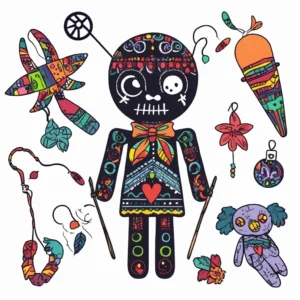
Is Voodoo a Legitimate Spiritual Practice?
The question of whether Voodoo is a legitimate spiritual practice is often rooted in cultural misunderstandings and prejudices. To address this question, it’s essential to consider Voodoo’s historical, cultural, and spiritual dimensions.
Voodoo is undeniably a legitimate spiritual practice with a rich history and deep cultural significance. Emerging from the spiritual traditions of West Africa, Voodoo has evolved over centuries, adapting to new environments and cultural influences. It has provided spiritual guidance, communal support, and a sense of identity for countless individuals and communities.
The legitimacy of Voodoo is further affirmed by its structured rituals, ethical framework, and spiritual leaders. Practitioners follow established rituals and ceremonies, seeking guidance from houngans (priests) and mambos (priestesses). These spiritual leaders possess extensive knowledge of Voodoo traditions, medicinal practices, and ethical principles, guiding their communities with wisdom and insight.
Voodoo’s emphasis on community and mutual support also underscores its legitimacy. The religion fosters a strong sense of social cohesion, with rituals and ceremonies serving as communal events that reinforce bonds and shared values. This communal aspect is a hallmark of many legitimate spiritual practices.
Moreover, Voodoo’s ethical framework is based on principles of harmony, respect, and reciprocity. Practitioners strive to maintain a balanced relationship with the spiritual
